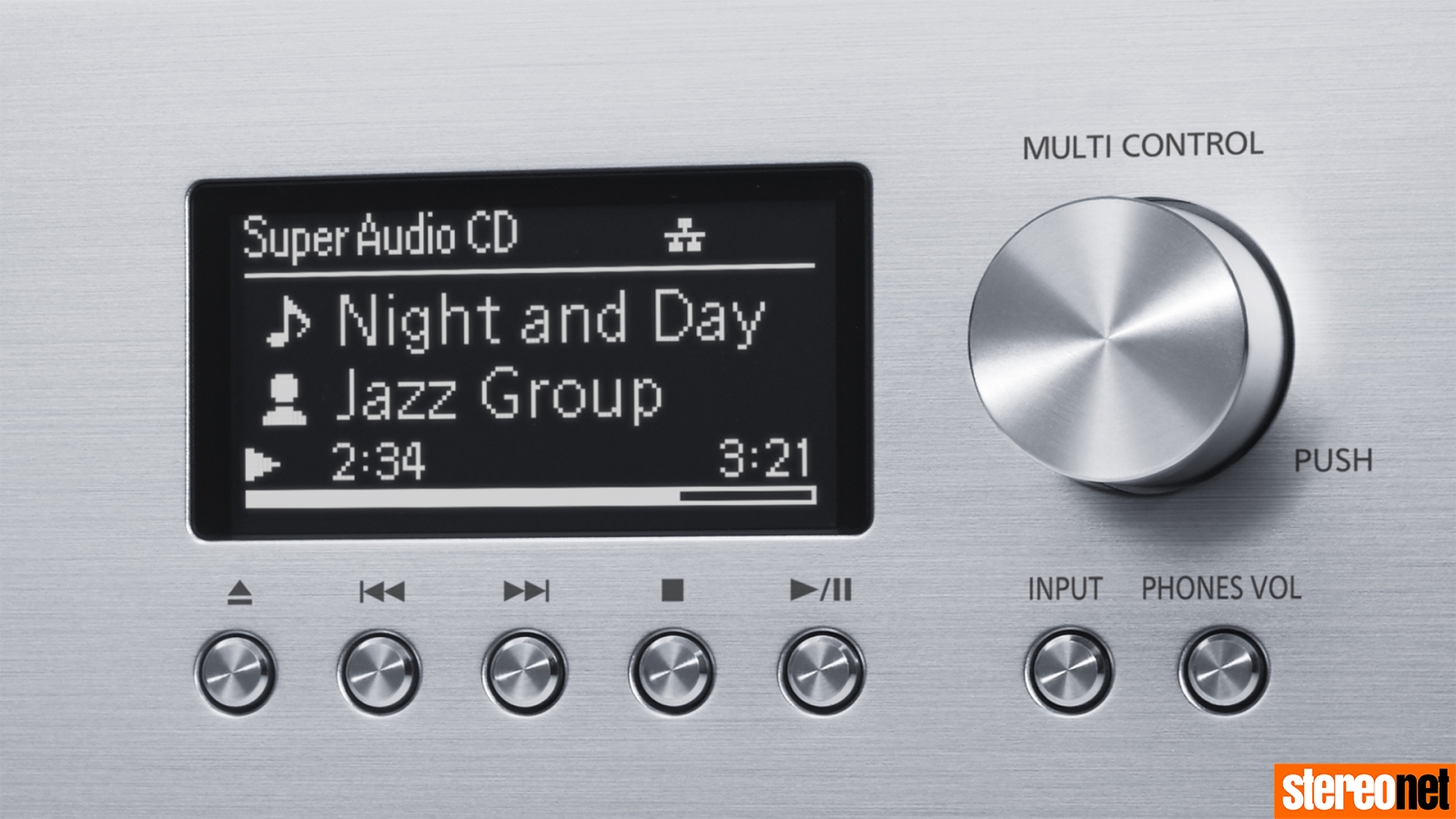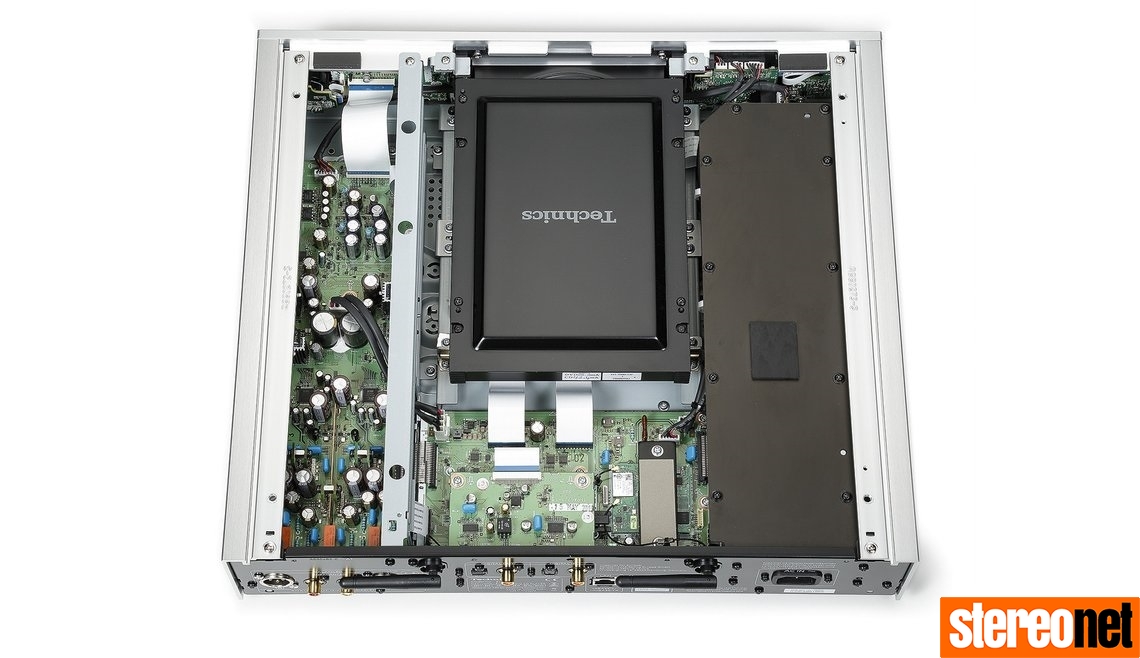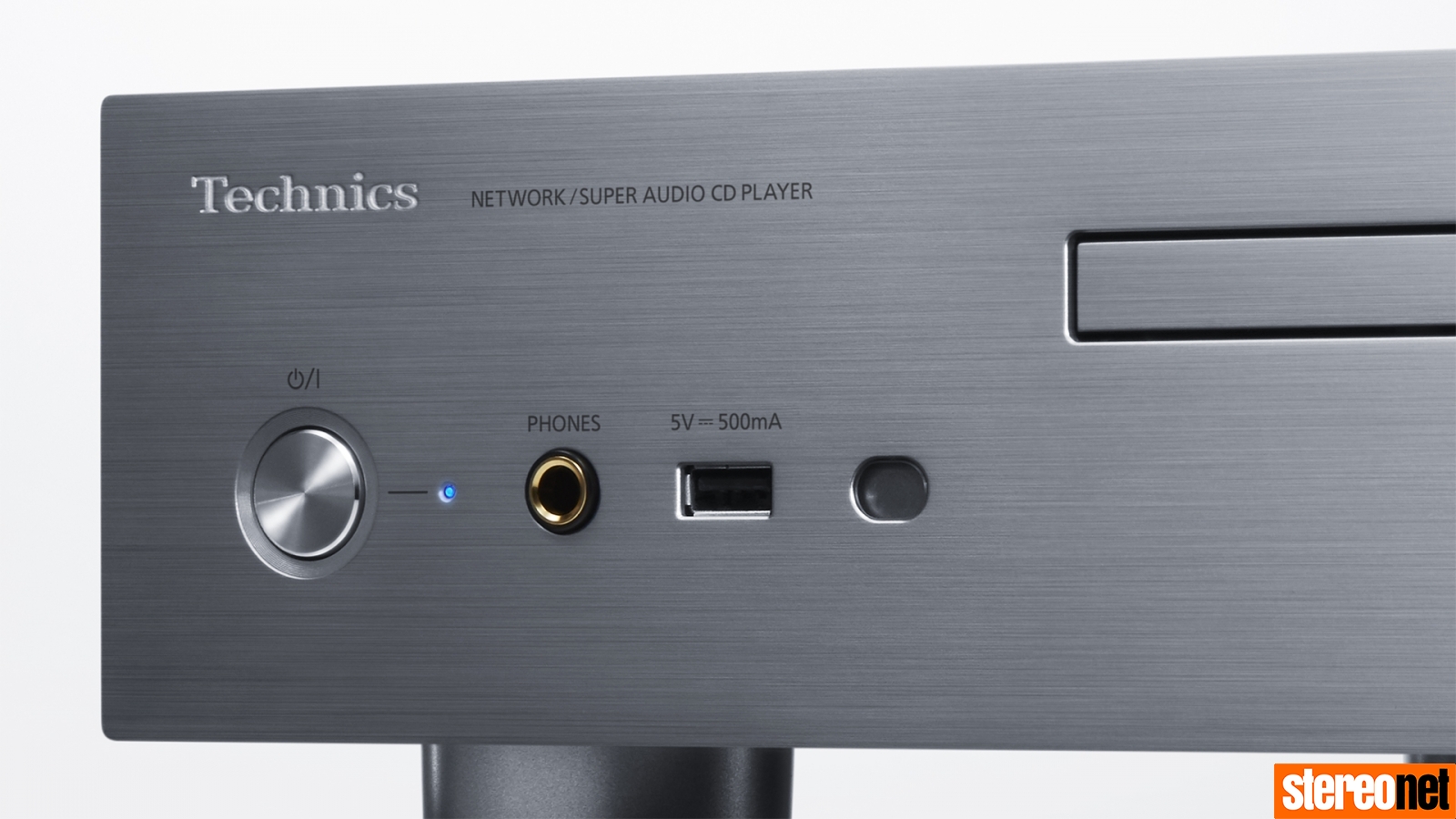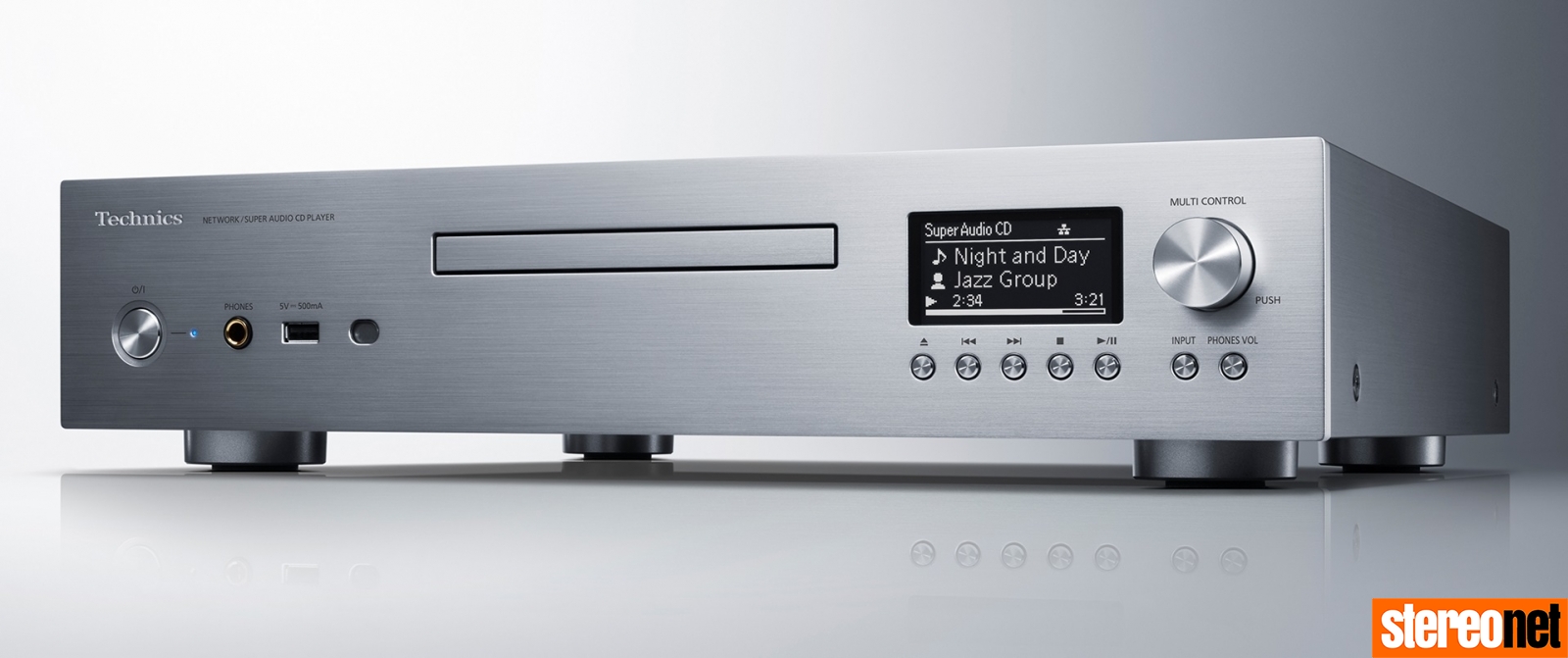Technics SL-G700 Network/SACD Player Review

David Price spends time with a thoroughly modern music maker…
Technics
SL-G700 Network/SACD Player
£2,350

This new Technics CD player, SACD player, network streamer and DAC is a really interesting product – but I can’t help but feel that we are witnessing something that fifteen years from now, will feel akin to one of those old hybrid VHS/DVD video recorders from the mid-nineteen nineties. In other words, it’s a super-clever do-everything design – but very much of its time.
There’s nothing wrong with that, of course. Technics is as unable to predict the future as the rest of us. The music software buying/streaming market is changing faster than I can ever remember. Just when you’ve finished reading the executive summary of some or other music business/market research report about the speed at which CD sales are tanking, then along comes another one that’s even more surprising. And then there’s SACD of course – that means nothing to anyone, except in Japan where it means an awful lot…
All of which explains why the £2,350 SL-G700 exists in the form that it does. It’s the company’s snazzy, multi-skilled mid-price digital player that plays practically any digital music file on the planet, in any number of ways. Being a ‘Grand Class’ model, it has something approaching high-end build without actually being a battleship. Look around the back, and you’ll see ‘Made in Malaysia’ rather than ‘Made in Japan’; this is the land of the rising sun’s ‘tier-two’ manufacturing destination, considerably more respectable than China but not quite the mother country. I seem to remember Sony regarding it as the only foreign country trusted to make its MiniDisc players in the nineties, but I digress…

No complaints about its build and finish, aside from one thing – the display is quite crude, lacking the swishness of some rivals, and it gives the product a slightly cold and technical feel. Maybe most prospective purchasers won’t mind, considering its myriad other talents, but there’s something of the nineteen nineties to its ergonomics. Making up for this is the disc drawer – instead of the usual plasticky “it’s an afterthought but never mind” affair that grinds out at you sounding like an old taxi with a broken rear diff, you get a lovely aluminium tray with a smooth, quiet action. Some of us still love physical media, and one of the nice aspects is handling them with really svelte playback equipment – Technics totally gets this, unlike some of its rivals.
Still, if a nineties audio aficionado time-travelled twenty-five years into the future to sample this, he’d be unimpressed by the disc access times. They’re better than most modern rivals, but we’re not talking the lightning speeds of the late eighties/early nineties players by any means. This again feeds into my sense of the SL-G700 being a lovely thing to look at, but not quite as ergonomically sophisticated to use.
BEHIND THE MASK
Take the casing off the SL-G700, and you’ll see a pair of Asahi Kasei Micro AK4497 DAC chips; good news for me personally as I’m more of a fan of these than I am the ESS family. They have a clean but enjoyably musical sound, with feint shades of the old mid-eighties Philips TDA1541’s character, if anyone is old enough to remember these. The sound is much smoother of course, especially with the Discrete AMP Module digital filter that uses low noise transistors and thin-film resistors, rather than an op-amp. Then there’s a thorough power supply arrangement, and even the clock gets a special ‘Battery Driven Circuit System’ to isolate it from the mains supply noise. An ultra-low jitter clock is fitted. The analogue output section has its own dedicated power supply, again using discrete transistors with no ICs.

The list of other audiophile touches is as long as your arm. Technics designers have paid particular attention to reducing digital noise, so the USB inputs are specially configured with magnetic carbon film resistors and ruby mica capacitors. The headphone section has a dedicated digital to analogue conversion circuit that’s independent of the main analogue outs. It sports the company’s so-called JENO Engine (that’s Jitter Elimination and Noise-shaping Optimisation to you, sir), and separate circuits for the audio signal voltage amplification and current amplification. All four different sections of the machine are physically partitioned, to reduce noise, and the 4mm thick iron plate chassis is especially strong.
In use, the multi-talented SL-G700 proved easy enough to fathom. It supports Bluetooth, Wi-Fi, and AirPlay 2, and works with streaming services like Spotify and TIDAL (it also decodes MQA) – and is also controllable via Google Assistant if you have the correct voice-activated speaker to hand. The machine is updatable via firmware updates. You get balanced and unbalanced analogue outputs, coaxial and optical outs and coaxial, digital and USB inputs. The Technics supports WAV, FLAC, DSD, AIFF, ALAC, AAC and MP3, so only hardcore geeks will be disappointed. The 430x98x407mm is entirely worthy of its price point, and weighing in at 12.2kg it feels very substantial. You certainly feel like you’ve got a lot of kit for your cash.

SOUND QUALITY
The SL-G700 has a distinctively Technics house sound – clean, crisp, dry, detailed and sinewy, this network player is a highly capable performer at the price. Perhaps this shouldn’t come as a surprise to me, as I know from personal experience that the company puts an awful lot of time into voicing its products. This is no exception, the result being that you feel like you’re listening to something more expensive than it really is.
What strikes me most about the SL-G700 is its clean, crystalline tonality. Digital sources at this price are quite variable, to be honest, but this one doesn’t put a foot wrong. Cue up a well-recorded SACD such as Roxy Music’s eighties classic Avalon, and you’re instantly struck by its copious amounts of detail allied to very low noise. There’s very little in the way of digital mush or hash, and at the same time, the tonal balance is exceptionally even. As far as this track goes, that meant a good, strong, firm bass, a smooth midband and a sweet and open treble; overall the sound was remarkably devoid of colouration and sounded sophisticated and svelte.

Indeed, I was reminded of some seriously expensive disc spinners when the Technics was playing SACD. The track’s great sense of air and space across the midband and treble was a treat, and it made for an ethereal sound – especially thanks to Bryan Ferry’s distinctive, quietly intoned and dreamy vocals. I found the same expansive feel with more modern material via CD. 4hero’s beautiful Give In from the late noughties was carried with an unexpectedly wide soundstage, and it was surprisingly three dimensional too. We’re not talking dCS levels of scale here of course, but it proved as good as anything else I’ve heard at this price.
Of course, CD is a step-down in performance compared to SACD, but it wasn’t dramatic and didn’t make conventional Red Book Compact Discs sound unlistenable. There was a subtle loss of resolution and insight, but the fundamental character of the machine remained. Its glass-clear character is allied to a surprisingly purposeful rhythmic gait; the player made the 4hero track bounce along, capturing the subtle timing of the percussion very well, along with the vocal phrasing. Switching to some rougher, old school rock and Elvis Costello’s Pump it Up proved lots of fun. It’s a loud, compressed and brightly recorded track that wins no prizes for audiophile recording quality, yet the SL-G700 caught the song’s energy and attitude well. It ultimately lacked dynamics but didn’t let the side down at its price.

Indeed, whatever source you chose, the player sounded consistent. Streaming and Bluetooth inputs were decent, the former especially. My hi-res version of Wings’ Band on the Run showed way more detail than the stock 16/44 PCM version and pulled me into an immersive sea of sound. Sure, the Technics was analytical enough to tell me about the relatively lo-fi nature of the recording, but still pulled out a lot of lovely nuances to the guitar playing, and gave life to the dry, slightly weightless bass on this track. This player can’t touch a high-end DAC like Chord’s Hugo TT in its portrayal of this nineteen seventies magnum opus of a rock song – there’s a very slight sense of dynamics being rounded off – yet it does fine overall.
THE VERDICT
 Pretty much an unalloyed success, I’d say. Given its brief – to be a do-it-all design that plays as many file formats as you one reasonably can in 2020, the Technics SL-G700 scores highly. It sounds clean and detailed yet surprisingly engaging too and is very well built – being closer to ‘baby high end’ than ‘jazzed-up budget’ fare. My only beef is its rather ‘generic Japanese’ display, but that won’t put most off. If you’re caught between formats, with sizeable CD and SACD collections and lots of hi-res on a NAS drive, it’s hard to think what better machine to bring all these files together.
Pretty much an unalloyed success, I’d say. Given its brief – to be a do-it-all design that plays as many file formats as you one reasonably can in 2020, the Technics SL-G700 scores highly. It sounds clean and detailed yet surprisingly engaging too and is very well built – being closer to ‘baby high end’ than ‘jazzed-up budget’ fare. My only beef is its rather ‘generic Japanese’ display, but that won’t put most off. If you’re caught between formats, with sizeable CD and SACD collections and lots of hi-res on a NAS drive, it’s hard to think what better machine to bring all these files together.
David Price
David started his career in 1993 writing for Hi-Fi World and went on to edit the magazine for nearly a decade. He was then made Editor of Hi-Fi Choice and continued to freelance for it and Hi-Fi News until becoming StereoNET’s Editor-in-Chief.
Posted in: Hi-Fi
JOIN IN THE DISCUSSION
Want to share your opinion or get advice from other enthusiasts? Then head into the Message
Forums where thousands of other enthusiasts are communicating on a daily basis.
CLICK HERE FOR FREE MEMBERSHIP
Trending
applause awards
Each time StereoNET reviews a product, it is considered for an Applause Award. Winning one marks it out as a design of great quality and distinction – a special product in its class, on the grounds of either performance, value for money, or usually both.
Applause Awards are personally issued by StereoNET’s global Editor-in-Chief, David Price – who has over three decades of experience reviewing hi-fi products at the highest level – after consulting with our senior editorial team. They are not automatically given with all reviews, nor can manufacturers purchase them.
The StereoNET editorial team includes some of the world’s most experienced and respected hi-fi journalists with a vast wealth of knowledge. Some have edited popular English language hi-fi magazines, and others have been senior contributors to famous audio journals stretching back to the late 1970s. And we also employ professional IT and home theatre specialists who work at the cutting edge of today’s technology.
We believe that no other online hi-fi and home cinema resource offers such expert knowledge, so when StereoNET gives an Applause Award, it is a trustworthy hallmark of quality. Receiving such an award is the prerequisite to becoming eligible for our annual Product of the Year awards, awarded only to the finest designs in their respective categories. Buyers of hi-fi, home cinema, and headphones can be sure that a StereoNET Applause Award winner is worthy of your most serious attention.





